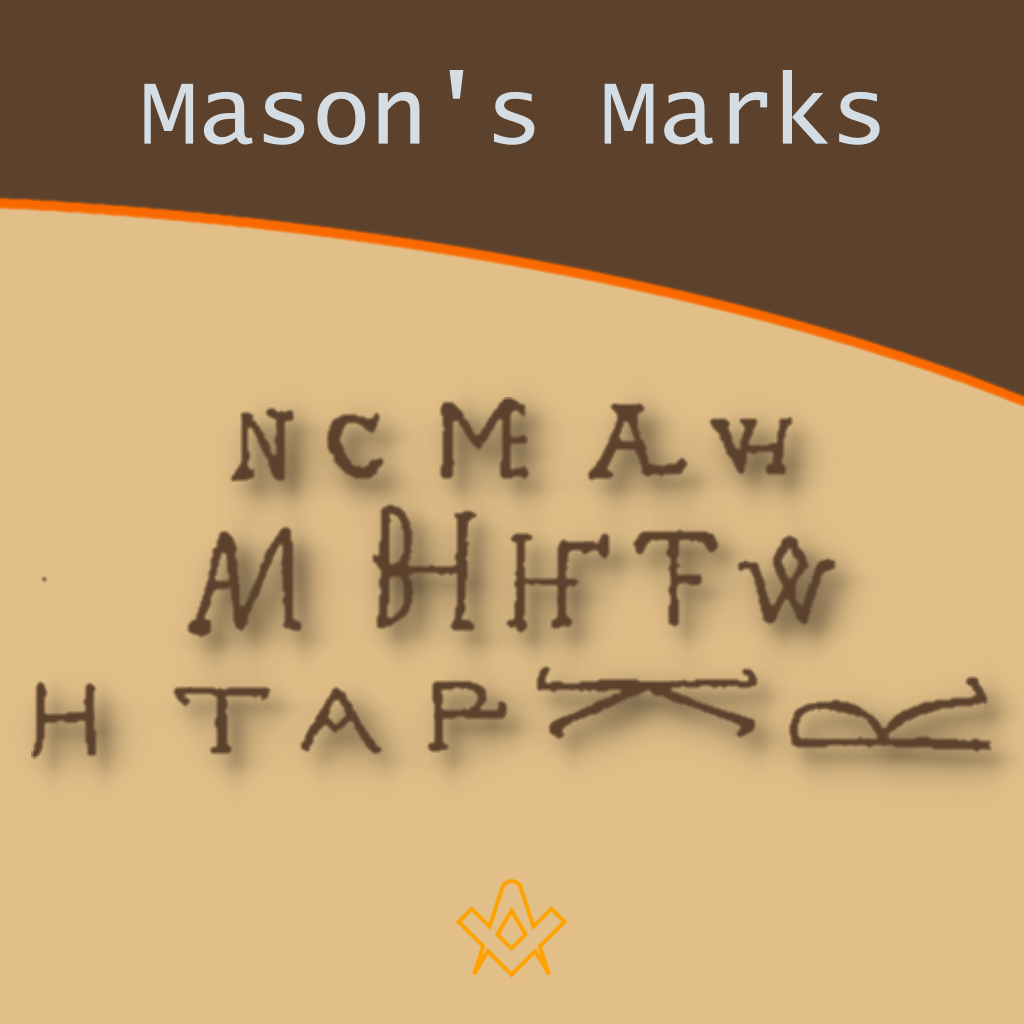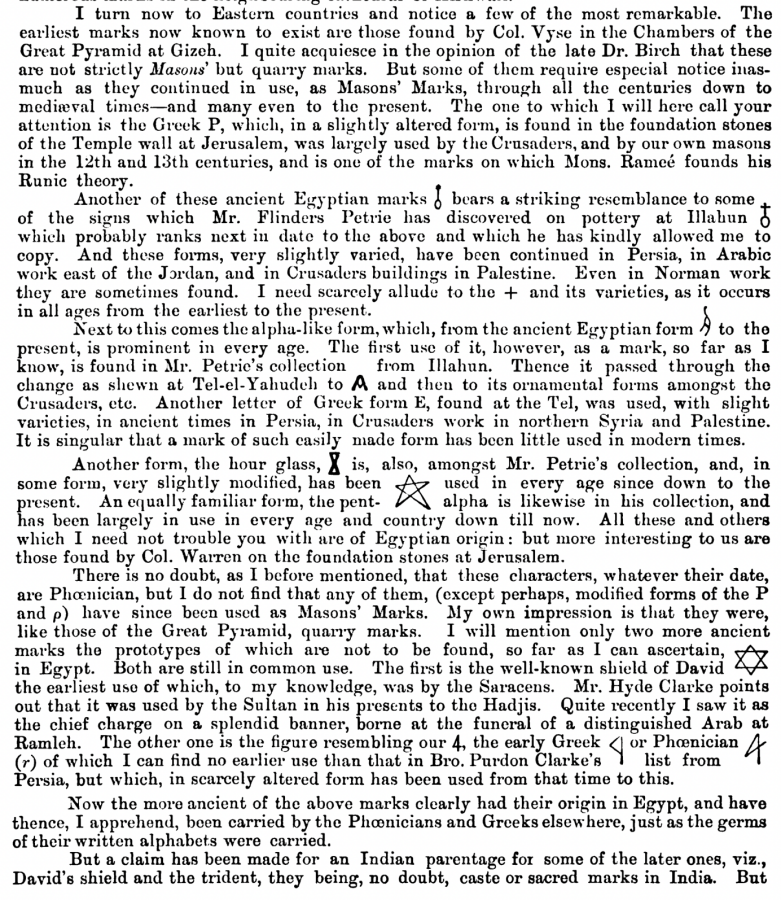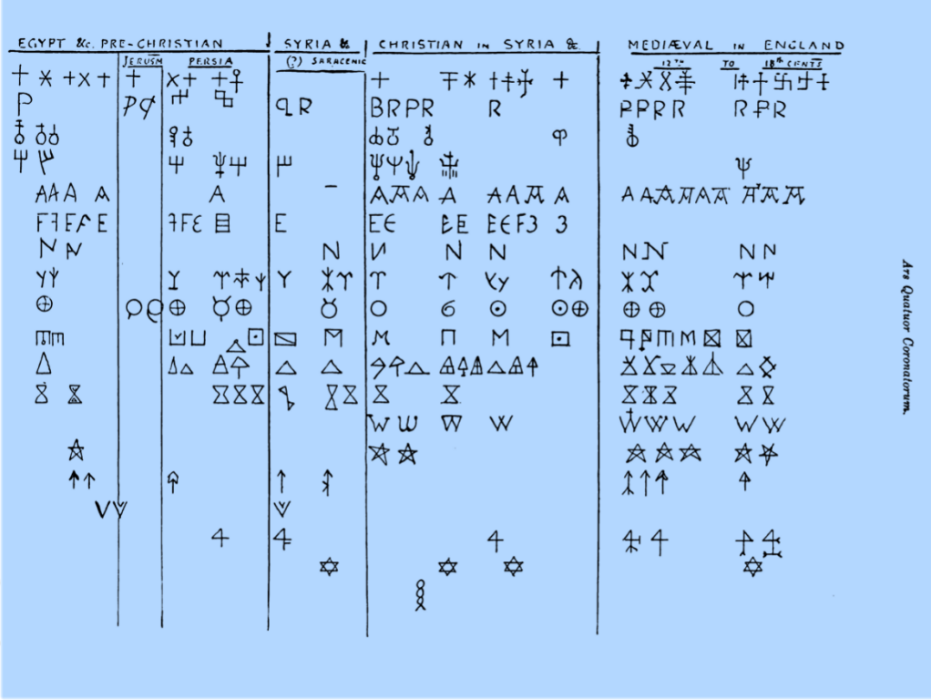Mason’s marks have long been a source of intrigue, not only to Freemasons but to historians and archaeologists.
The use of simple pictograms or symbols have been employed for millennia by artisans across the globe to identify their work. But where did they originate and why?
In a previous article, Egypt’s ‘Place of Truth’, we explored the use of identification marks used by the ancient Egyptian stone and tomb workers of the Village of the Artisans at Deir el-Medina.
These types of marks have been discovered on the walls of pyramids, temples, and tombs, and subsequently documented by explorers and Egyptologists from the 18th century onwards.
In this part of the series on the history of the stone masons, we look not only at the possible origins, but why the marks were used.

Egypt’s ‘Place of Truth’ – The First Operative Stone Masons’ Guild?
Was ancient Egypt’s ‘village of the artisans’ the first operative stone masons’ guild? And was their use of ‘identity marks’ a forerunner of the Mason’s Marks of the cathedral builders of the Middle Ages? Read on for some possible answers…
more….
What is a mason’s mark and why were they used?
From Mackey’s History of Freemasonry:
A Mason’s Mark is a monogram, a symbol, or some other arbitrary figure chiselled by a mason on the surface of a stone for the purpose of identifying his own work and distinguishing it from that of other workmen.
Mr. Godwin, in an article “On Masons’ Marks observable on Buildings of the Middle Ages,” published some years ago, has given, perhaps, the best definition that we possess of the true character of these Sculptural figures.
He says that it can perhaps hardly be doubted that these marks were made chiefly to distinguish the work of different individuals.
At the present time the man who works a stone (being different from the man who sets it) makes his mark on the bed or other internal face of it so that it may be identified.
The fact, however, that in the ancient buildings it is only a certain number of stones which bear symbols – that marks found in different countries (although the variety is great) are in many cases identical, and in all have a singular accordance in character – seems to show that the men who employed them did so by system, and that the system, if not the same in England, Germany, and France, was closely analogous in one country to that of the others.
He adds that many of these signs are evidently religious and symbolical, “and agree fully with our notions of the body of men known as the Freemasons.”
That there should be a purpose of identification so that the particular work of every Mason might, by a simple inspection, be recognized by his Fellows and the Lord or Master of the Works might be enabled to attribute any defect or any excellence to its proper source, was essentially necessary to constitute a Masonic Mark.
By observing this distinction, we avoid the error committed by several writers of calling every device found upon a stone a mark, and thereby giving to the system of marks a greater antiquity than really belongs to it.
Thus it has been said by one writer that “Masonic Marks have been discovered on the Pyramids of Egypt, on the ruined buildings in Herculaneum, Pompeii, Greece, and Rome, and on the ancient cathedrals, castles, etc., that are to be found in almost every country of Europe.”
But the fact is that the inscriptions and devices found on stones in buildings of antiquity were most probably mythological, symbolical, or historical, being a brief record of or allusion to some important event that had occurred. If any of them were proprietary — that is, intended to identify the work or the ownership of some particular person — there is no evidence that any well-organized system of proprietary marks existed in that very early period.
That last paragraph can now be disproven to some degree – there is indeed evidence that the artisans in ancient Egypt were using ‘a well-organised system of proprietary marks’, and were not just random symbolism or dating marks.
Where did the use of marks originate?
There is some contention as to the first recorded use of ‘identity’ or ‘mason’ marks. As mentioned in Mackey’s History above, it was believed at that point that the use of marks on buildings of antiquity was merely decorative religious symbolism.
The origins of identity (banker), quarry, and assembly marks found in Egypt and other Eastern countries are thoroughly examined in Prof. Thomas Hayter Lewis’ paper “Masonry and Masons Marks” (AQC Vol. 3, 1890 pp.65-76):
However, the research of Egyptologists (see below), and Prof. Hayter Lewis, has been confirmed in a recent project entitled ‘Symbolizing Identity. Identity Marks and their Relation to Writing in New Kingdom Egypt’.
Led by Egyptologist Ben Haring at Leiden University, a team researched the use of workmen’s marks found on ostraca (limestone pot sherds), graffiti, and in the tombs of the workers.
The researchers discovered evidence of non-textual ‘identity marks’ used by the highly literate New Kingdom artisans and have investigated their usage not only in a linguistic sense but also in the social and administrative background.
This research has demonstrated how the use of these specific marks may have migrated across the globe after the fall of the Egyptian civilisation, to be preserved indelibly within the walls of the structures built by the medieval stone masons.
In the 19th century, William Flinders Petrie (1853-1942) documented their use in his records of excavations at the pyramids of Giza; in the early 1900s Theodore Davis (1838-1915) discovered heaps of limestone pot sherds (ostraca) covered in identity marks of the 18th Dynasty workers at Deir el-Medina.
These ostraca showed lists of marks attributed to the workers and the subsequent tallies of equipment or wages.

Middle Kingdom (11th Dynasty) stone mason’s chisel – bearing a probable identity mark – From Egypt, Upper Egypt, Thebes, Deir el-Bahari, Tomb MMA 101, MMA excavations, 1926–27.
IMAGE CREDIT: Metropolitan Museum of Art Open Access Program Attribution 4.0 International (CC BY 4.0)
Middle Kingdom artefacts, such as gavels and chisels found during excavations at the Temples of Mentuhotep, and Hatshepsut at Deir el-Bahari, bear the marks of artisans, which would imply that each worker not only valued, and most likely made their own working tools, but marked them accordingly.
“Indian Masons Marks of the Moghul Dynasty’, a book by Bro. A Gorham published in 1911 by the SRIA, documents the use of what appear to be mason’s marks on various Islamic structures in India from c.1180 A.D. onwards.
Although there is some conjecture relating to the ‘Masonic symbols’ found on the buildings, it does seem that not only were ‘assembly marks’ used but also those very similar to the identification marks used by the Egyptian artisans from Deir el-Medina.
On describing his visit to a fortress in Billababad, Bro. Gorham writes:
In the “Royal Masonic Cyclopaedia,” by Bro. Kenneth Mackenzie, we find the following reference to the Fort.
Numerous ancient, sculptured stones are found utilized in the more recent structures, and on these are irregularly carved many of the well-known symbols of masonry, dating from an extremely remote period.
He continues with another quote, this time from the Freemasons’ Quarterly Review:
The walls are composed of large oblong blocks of red granite and are almost everywhere covered by Masonic emblems which evince something more than mere ornamentation.
They are not confined to one particular spot, but are scattered over the walls of the fortress, in many places as high as thirty or forty feet from the ground.
It is quite certain that thousands of stones on the walls, bearing the Masonic symbols, were carved, marked and numbered in the quarry – previous to the erection of the building.
What were marks primarily used for?
There are three instances where a stone may be marked:
Quarry Marks
Stone taken out of a quarry was given a mark to show where it was cut from, where it would be shipped to, and possibly the date.
This was usually painted on the rough-cut block, and would be recorded in the quarry-master’s tally system.
Egyptologist Gaston Maspero (1846-1916) mentioned how the ancient Egyptians used this practice of marking when describing the 4th Dynasty Pharoah Kheops’ Great Pyramid of Giza:
…contained only the chambers of the deceased, without a word of inscription, and we should not know to whom it belonged, if the masons, during its construction, had not daubed here and there in red paint among their private marks the name of the king, and the dates of his reign…
The workmen often drew on the stones the cartouches of the Pharaoh under whose reign they had been taken from the quarry, with the exact date of their extraction; the inscribed blocks of the pyramid of Kheops bear, among others, a date of the year XVI.
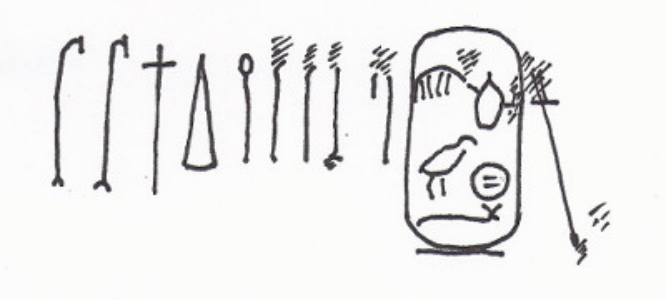
Quarry inscription on a “backing stone” of the Cheops pyramid with the name of Cheops. Drawing after Georges Goyon, Les inscriptions et graffiti des Voyageurs sur la Grande Pyramide. Cairo, 1944, Miscellaneous 23.
By Didia – Own work
IMAGE LINKED: wikimedia Attribution 4.0 International (CC BY 4.0)
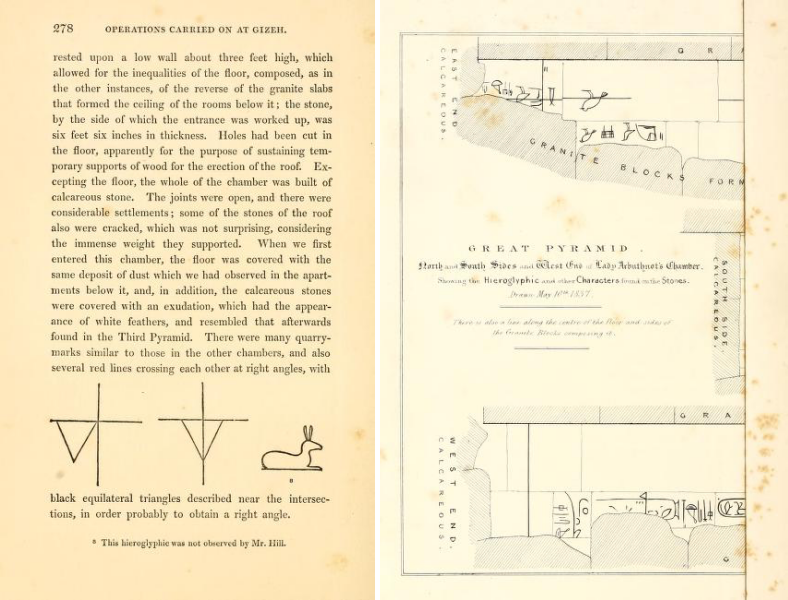
left: Quarry marks found and documented by Vyse, in the Great Pyramid of Giza, from “Operations carried on at the pyramids of Gizeh in 1837” (1840)
right Quarry and “gang” marks found and documented by Vyse in the Great Pyramid of Giza, from “Operations carried on at the pyramids of Gizeh in 1837” (1840)
Egyptologist Richard Howard Vyse (1784-1853), Civil Engineer J.R. Perring, and later Flinders Petrie documented the use of quarry marks within the Great Pyramid.
“Alongside the lines, markers, and directional notations were the names of various work gangs who cut and transported the stone blocks.
All of these work gang names contained a variant of the pharaoh’s name i.e. Khufu, Khnum-Khuf and Medjedu, the first two of which were contained within the distinctive royal cartouche.
While most of these gang names were concentrated in Lady Arbuthnot’s and Campbell’s Chamber, all four chambers opened by Vyse contained graffiti (or more correctly “quarry-marks” as Vyse called them) while the previously discovered Davison’s Chamber contained none.
The now famous instance of Pharaoh Khufu’s name is found on the south ceiling towards the west end of Campbell’s Chamber.
The Khufu cartouche is part of a short inscription that reads Ḫwfw śmrw ˤpr (“the gang, Companions of Khufu”), i.e. one of the gangs of workmen that constructed the chamber.
Though the cartouche of Khufu is obscured by blocks or was cut off, this same gang name is also found several feet away on the last ceiling block.
Vyse also depicts a partial Khufu cartouche on the North side of the chamber.
Vyse had the graffiti copied by his assistant, J. R. Hill, and sent them to Samuel Birch, the Keeper of Antiquities at the British Museum who, at the time, was one of the very few scholars able to translate Egyptian hieroglyphs.
Birch was able to identify this cartouche as belonging to Suphis / Cheops as it had previously been identified by the Italian scholar, Ippolito Rosellini, thereby confirming Khufu’s involvement with the Great Pyramid – an association which had, until then, been reported only by Herodotus who records Khufu as the builder of the structure.
Several compound cartouches of the similarly famous “Khnum-Khufu” royal name, also part of work gang graffiti, are found in Lady Arbuthnot’s Chamber, with more examples of the gang name found in Nelson’s Chamber and Wellington’s Chamber.”
Source: Wikipedia
In “Operations carried on at the pyramids of Gizeh in 1837” (1840), Vyse writes of his correspondence with Birch:
The following observations, by Mr. S. Birch of the British Museum, which relate generally to the quarry-marks in all the chambers of construction that have been cleared in the Great Pyramid, and specimens of them are given in the annexed plates : —
The symbols or hieroglyphics, traced in red by the sculptor, or mason, upon the stones in the chambers of the Great Pyramid, are apparently quarry-marks ; a supposition strengthened by the fact of their appearance upon the blocks which have been transported from the Mokattam, and of their absence on the stones quarried upon the spot.
Although not very legible, owing to their having been written in semi-hieratic or linear-hieroglyphic characters, they possess points of considerable interest from the appearance of two royal names, which had already been found in the tombs of functionaries employed by monarchs of that dynasty under which these Pyramids were erected.
Like Vyse, Civil Engineer J. S. Perring noted the abundance of quarry/assembly and ‘gang’ marks during his survey, which were “sketched on the spot” by E.J. Andrews.
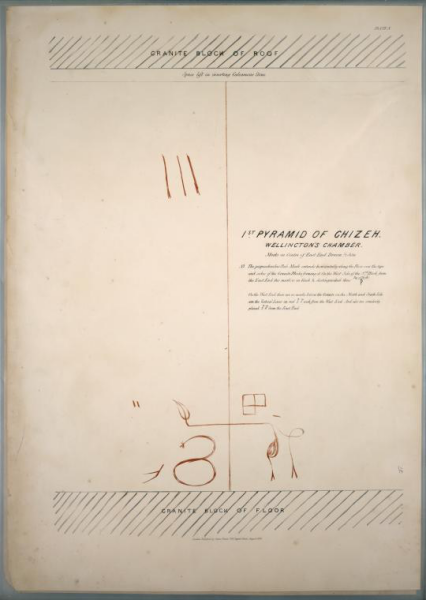
Perring, J. S. “1st pyramid of Ghizeh, Wellington’s chamber. Marks in centre of east end (drawn 1/2 size).” The New York Public Library Digital Collections. 1839 – 1843.
IMAGE LINKED: wikimedia Attribution 4.0 International (CC BY 4.0)
Assembly Marks
The term ‘assembly marks’ is self-explanatory – they were used to indicate the often-complex method of constructing the building.
The marks would be used to show the builders which direction the stones were to be laid and which order, when constructing arches, doorway or pillars.
These marks are often still visible on the stones in temples, churches and cathedrals. Assembly marks were not exclusive to stone masons, any trade or craft that involved a method of assembly would employ a similar system of construction and the building materials would possibly appear identical; marks are often seen on timber frames.
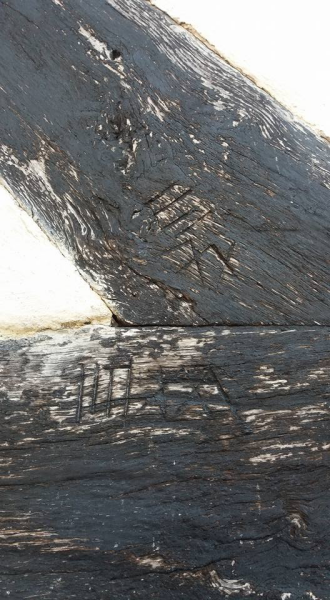
Example of assembly marks on a timber frame at Little Moreton Hall, Cheshire, England.
Photo: Philippa Lee
Identity or Banker Marks
These types of marks were used by the masons who cut the blocks or fashioned them intricately – highly skilled jobs which determined a higher rate of pay.
The masons were paid for their ‘piecework’, and the individual marks served not only as a record of the jobs achieved but allowed for the paymaster to enter the correct wages in his tally/accounting books (or ostraca – see below) that list each mason’s mark and his wages.
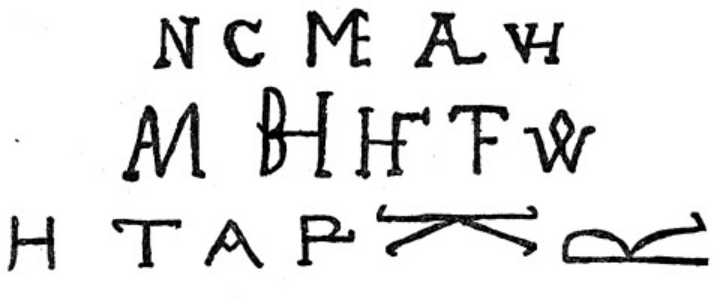
IMAGE CREDIT: freemasonry.bcy.ca/history/marks/freemasonsmarks
How do the marks found in Egypt and India translate to those used by the medieval masons?
The illustrations below show Gorham’s sketches of the marks he encountered.
Some symbols will be familiar to us including the six-pointed star, the swastika, the vesica piscis etc. but if we look carefully, there are several that reflect those used by the artisans in Egypt a thousand years earlier as mentioned by Flinders Petrie and Prof Hayter Lewis:
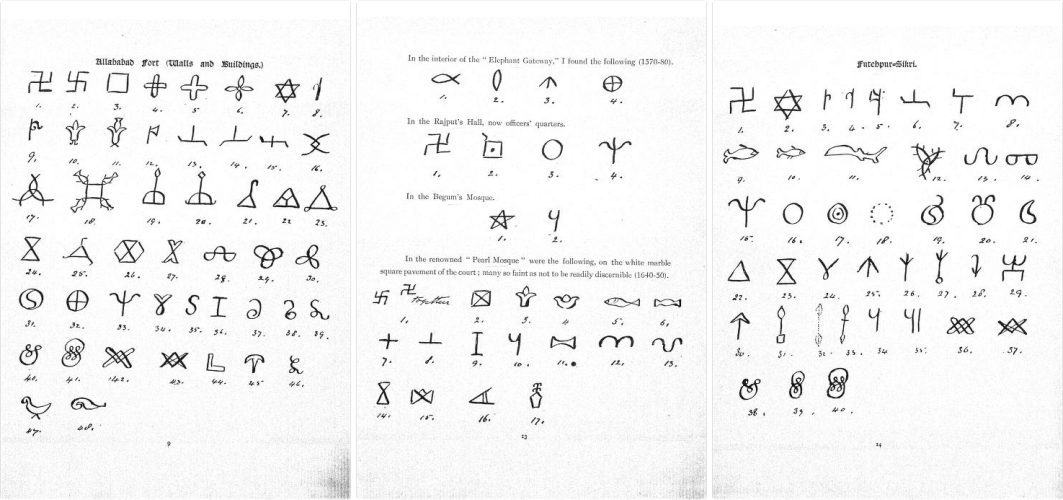
Indian Masons Marks of the Moghul Dynasty, A. Gorham, 1911
Below are examples of the marks used by the artisans at Deir el-Medina, Luxor, Egypt.
They were the subject of research in the recent project conducted by the University of Leiden.
Note some of the more familiar glyphs/signs used, and the use of tally marks:
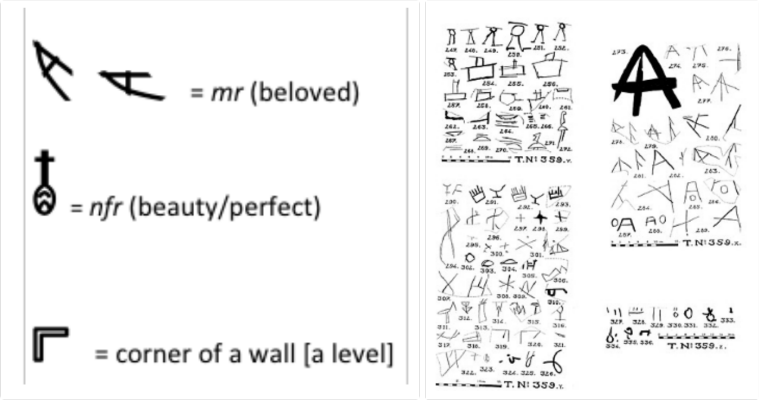
Examples of identity marks from Deir el-Medina
IMAGE LINKED: Image is the copyright of University of Leiden Attribution 4.0 International (CC BY 4.0)
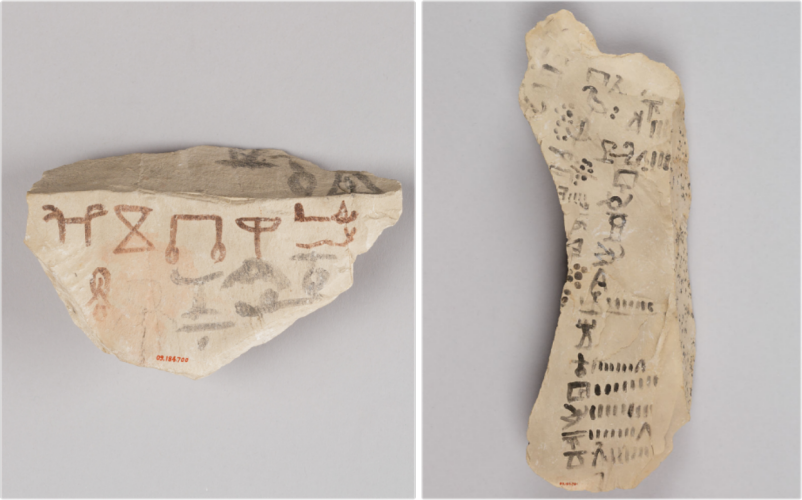
left: LIMESTONE OSTRACON WITH WORKMEN’S IDENTITY MARKS C. 1390–1352 B.C NEW KINGDOM, REIGN OF AMENHOTEP III. EXCAVATED BY THEODORE M. DAVIS IN THE VALLEY OF KINGS, THEBES. ALLOTTED TO DAVIS BY THE EGYPTIAN GOVERNMENT IN THE DIVISION OF FINDS. GIVEN BY DAVIS TO THE METROPOLITAN MUSEUM IN 1909. ACCESSION NUMBER: 09.184.700
right: LIMESTONE OSTRACON INSCRIBED WITH IDENTITY MARKS C. 1126–1070 B.C. NEW KINGDOM, RAMESSIDE – REIGNS OF RAMESSES IX – RAMESSES XI. EXCAVATED BY THEODORE M. DAVIS IN THE VALLEY OF KINGS, THEBES AND DONATED TO THE METROPOLITAN MUSEUM IN 1909. ACCESSION NUMBER: 09.184.784
IMAGE CREDIT: MET MUSEUM OA Attribution 4.0 International (CC BY 4.0)
Below is an example discovered by the author in the 3rd Dynasty Step Pyramid of Djoser at Saqqara:
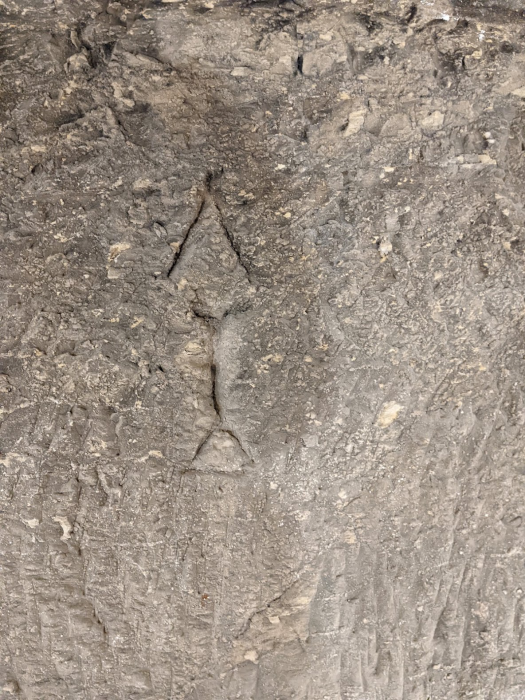
Example of a mason’s identity/assembly mark in the 3rd Dynasty Step Pyramid of Djoser (c. 2670–2650 BC), Saqqara Necropolis, Egypt.
IMAGE CREDIT: Philippa Lee, 2022
Conclusion
The similarities between the marks utilised by the ancient Egyptians, the early Islamic architects, and the craftsmen of the Middle Ages onwards are striking.
So much so that we can reasonably surmise that they migrated with travelling workmen and were inevitably passed down from one worker to another, either via a familial or guild link. However, we must also remember that correlation does not necessarily imply causation – humans are remarkably adept at utilising geometric patterns, especially where carving is required, and only so many permutations of easily produced symbols are possible.
In the next part of this series on Operative stone masons, we will explore the use and regulation of masons’ marks within the Guilds, and how they were subsequently adopted by Speculative Masons.
Article by: Philippa Lee. Editor

Philippa Lee (writes as Philippa Faulks) is the author of eight books, an editor and researcher.
Philippa was initiated into the Honourable Fraternity of Ancient Freemasons (HFAF) in 2014.
Her specialism is ancient Egypt, Freemasonry, comparative religions and social history. She has several books in progress on the subject of ancient and modern Egypt. Selection of Books Online at Amazon
Recent Articles: masonic history
 Protestantism and Masonic Influence in Brazil Discover the untold story of how Freemasons helped Southern Americans immigrate to Brazil post-Civil War, fostering economic and educational growth in Santa Bárbara d’Oeste and Americana. Learn about their pivotal role in establishing Protestant churches and ensuring the secularity of the Brazilian State amidst a Catholic-dominated society. |
 Explore the proper use of the sacred word in Brazilian Freemasonry through an analysis of Masonic literature and Bible translations. Uncover the errors in pronunciation and the need for corrections to maintain liturgical coherence in rituals. Discover insights on Masonry, rituals, and the Hebrew word Boaz. |
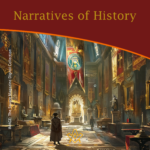 Narratives of History |
 A Very Royal Sesquicentenary |
 Unveiling the Enigma: Discover the Royal Society's Legacy and its Impact on Science. Delve into the fascinating history of the Royal Society, the prestigious UK academy shaping scientific progress since 1660. Explore its pivotal role in advancing knowledge, fostering collaboration, and unlocking the secrets of the universe. Prepare to be amazed! |
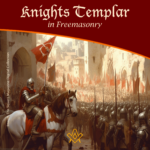 Knights Templar in Freemasonry Uncover the Mysteries of the Knights Templar in Freemasonry! Delve into the intriguing world where chivalry and symbolism intertwine. Discover the captivating rituals and ancient secrets behind the Knights Templar Masonic Orders. Explore the historical connection and delve into the enigmatic narratives that continue to fascinate enthusiasts today. Unveil the hidden truths now! |
 The Royal Arch stands as the rainbow of promise in the Ritual; it stands as the promise of the resurrection; of that which was lost and that it shall be recovered. The question arises as to whether the Master's Word was originally communicated in the Third Degree? On this point there is some diversity of opinion. Originally published in 1915, this insight into the Fourth Degree – the Holy Royal Arch – is as relevant today as it was over 100 years ago. |
 Unveiling the Mysteries of Druidism: Discover the Intriguing Connection with Freemasonry. Explore the ancient spiritual practice of Druidism and its fascinating ties to the enigmatic world of Freemasonry. Delve into the shared symbolism and rituals that have captivated minds for centuries. Unlock the secrets of these intertwined traditions today! |
 Uncover the legacy of freestone masons and their pivotal role in crafting medieval cathedrals. Discover the artistry behind their techniques, the hierarchy within their craft, and the enduring impact of their intricate carvings. A deep dive into the world of these master craftsmen awaits you! |
 Unearth the intriguing journey from Vincha Culture to Freemasonry. Discover how ancient building methods intertwine with modern Masonic philosophies. This exploration will shed light on the fascinating link between the Serbian term "shestarenye" and the symbolic significance of the compass in Freemasonry. |
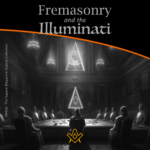 Freemasonry and the Illuminati Unravel the enigmatic world of Freemasonry and the Illuminati in our latest exposé. Dive into centuries-old mysteries, debunk conspiracy theories, and discover the truth behind these elusive societies. Are they puppet masters or mere myths? Join us as we dissect history and fact from fiction. |
 The Île des Templiers, or “Island of the Templars” lies within a leafy park in Paris. The execution site of Jacques du Molay, the last Grand Master of the Knights’ Templar bears a plaque with the epitaph ‘A cet endroit / Jacques de Molay / Dernier grand maître / de l'ordre du temple / a été brûlé le 18 Mars 1314’ (‘In this location / Jacques de Molay / Last grand master / of the order of the temple / was burned on 18 March 1314’) |
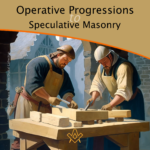 Operative Progressions to Speculative Masonry Both Operative and Speculative Masonry are an important part of the modern fraternity of Freemasonry, which combines elements of both traditions. Today, Freemasonry is a fraternity that is open to men of good character, who are interested in personal development and in making a positive contribution to their communities. |
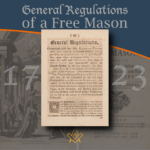 General Regulations of a Free Mason, 1723 General Regulations of a Free Mason as contained in Anderson's Constitutions of the Freemasons, published 1723. the Regulations are of great historical interest. Compiled by George Payne, the second Grand Master of the Premier Grand Lodge of England, they were printed in 1722/3, thus published just over five years after the formation of the Grand Lodge 1717. |
 The Genesis of the 1723 Book of Constitutions 2023, marks the three hundredth anniversary of the publication of the first printed Book of Constitutions of the Grand Lodge formally established in London two years previously. This is an anniversary whose significance extends beyond freemasonry. A paper by Andrew Prescott |
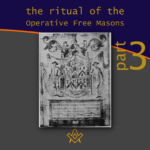 The Ritual of the Operative Free Masons - P3 Existing Operative Free Masons. The ritual I am about to refer, is that of "The Worshipful Society of Free Masons, Rough Masons, Wallers, Slaters, Paviors, Plaisterers, and Bricklayers." By Thomas Carr, M.D., P. M. Honorary Member of the Guild of Operative Free Masons |
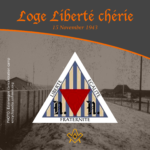 Liberté chérie was a Masonic Lodge founded in 1943 by Belgian Resistance fighters and other political prisoners at Esterwegen concentration camp. It was one of the few lodges of Freemasons founded within a Nazi concentration camp during the Second World War. |
 The Ritual of the Operative Free Masons - P2 If anyone doubts the fact that the formation of Speculative Free Masonry was due to and based upon Operative Free Masonry, it is quite easy to convince him of his error if he will only study the first Book of Constitutions. By Thomas Carr, M.D., P. M. Honorary Member of the Guild of Operative Free Masons |
 In 1881, Freemasonry rose from the ashes of a fire in the mining town of Kokomo, Summit County, Colorado. Corinthian Lodge No. 42, along with Kokomo, no longer exists but it holds the record of having been – at an elevation of 10,618 feet – the highest Masonic Lodge in the USA. |
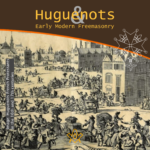 The Huguenots and Early Modern Freemasonry The Huguenots influence in the development of early modern Freemasonry at the time of the formation of the Grand Lodge in London around 1717 / 1723. |
 November is a month of reflection – perhaps due to the fact that we are getting close to the years' end – but also because Remembrance / Armistice Day (11 November) is a significant date in most countries' diaries. |
 Speculative Freemasonry, as practise by Grand Lodge of England, was officially born just over three hundred years ago, is today an international organisation, counting over six million members. It has been subjected to persecution, suppression, and abolition throughout its history. In its infancy, only a couple of decades after its official birth, it had already become a target. |
 The Ritual of the Operative Free Masons - P1 The original paper was written, first, to prove that Speculative Free Masonry was derived from Operative Free Masonry; second, to give some account of the Operative Free Masons, of their Ritual, and of their customs. By Thomas Carr, M.D., P. M. Honorary Member of the Guild of Operative Free Masons |
 American Fraternalism in the 19th and Early 20th Centuries The late 19th and early 20th centuries in the United States has been called the "Golden Age of Fraternalism." How did this come about and why was the idea of joining a fraternal organization so popular? We will explore this question and examine the regalia used by many fraternal organizations in this period. |
 Societas Draconistarum, meaning "Society of the Dragonists"– was a chivalric Order for selected nobility, founded in 1408 by Sigismund von Luxembourg, who through marriage became the King of Hungary (1387–1437) and later Holy Roman Emperor. The Order was fashioned after the military orders of the Crusades, requiring its initiates to defend the cross and fight the enemies of Christianity, in particular the Ottoman Empire. |
 The Perjured Free Mason Detected Was Samuel Prichard a perjured individual, or simply a misguided Freemason? Prichard's book "Free Masonry Dissected" published in 1730, is now used by many Masonic historians as a source of reference with regards to the introduction of the third degree into the Craft. But at the time it was published in 1730, it was not so well received by members of the Grand Lodge of England. |
 17th century and the Holy Royal Arch This article focuses on a period of transition between a point in time when we can safely and historically identify the first formation of what could be called as the ‘Royal Arch’ and the historical events that have preceded it. |
 Most Freemasons have heard the terms 'Operative' and 'Speculative' Masons, and this article helps to understand the difference: |
 Roberts' Constitutions of Freemasonry 1722 Published a year before Anderson's Constitutions, The Old Constitutions Belonging to the Ancient and Honourable SOCIETY OF Free and Accepted MASONS. Originally printed in London England; Sold by J. Roberts, in Warwick-Lane, MDCCXXII.(1722) |
 From 'Songs of religion and life', 1876 by John Stuart Blackie (1809-1895) |
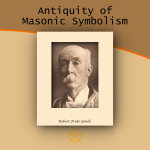 On the Antiquity of Masonic Symbolism Is the Symbolism of Masonry an inheritance derived from the old Masons who flourished before the era of the Grand Lodges (1717); or has it been borrowed from the Rosicrucians or others, after 1717? |
 Mason's Marks – from Egypt to Europe? Mason's marks have been a source of intrigue, not only to Freemasons but to historians and archaeologists. The use of simple pictograms have been employed for millennia by artisans to identify their work. But where did they originate and why? |
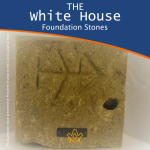 The White House Foundation Stones Further to the articles in our series on the history of the stone masons, we have a rather intriguing addition. During the 1950's renovation of the White House, President Truman retrieved more than 100 stone blocks with stonemasons marks. |
 What the Goose and Gridiron Tavern is in the ancient annals of London Freemasonry, The Green Dragon Tavern is to the memories of the Free-mason, of Boston and New England. |
 Auschwitz concentration camp: video photo article taken in 2013 |
 There are two things of importance happening this day - 27 January |
 Two approaches regarding the understanding of Freemasonry |
 Masonic Research in England c1930 An article which appeared in an American Masonic magazine, c1930 and which was reproduced in England, provoking a little controversy. |
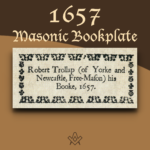 Masonic bookplates the ‘Brethren’s spiritual coats of arms and marks’ |
 The Unlawful Societies Act of 1799 Rebellious Freemasons and the 21st century |
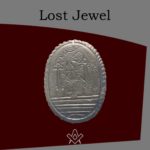 In 1912, Sarah Dowd of Dromore, Ireland, found a Masonic jewel dated 1517 - a date two hundred years before the establishment of Grand Lodge... |
 Freemasonry and Fascist Regime Interesting speech by the famous historian Prof. Aldo A. Mola, who links the fascist regime with the Masonic Associations. |
 Was famous Russian poet Alexander Pushkin a Freemason? And if so, was he a member of the lodge ‘for which all the lodges in Russia were destroyed’? |
 The Importance of Masonic Research Why is accurate - or authentic - Masonic research so important? The importance of making a daily advancement in Masonic knowledge is something that The Square is passionate about promoting. |
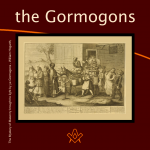 The Antient Noble Order of the Gormogons had a brief existence in the eighteenth century; they left few records or accomplishments, |
masonic knowledge
to be a better citizen of the world
share the square with two brothers

click image to open email app on mobile device


